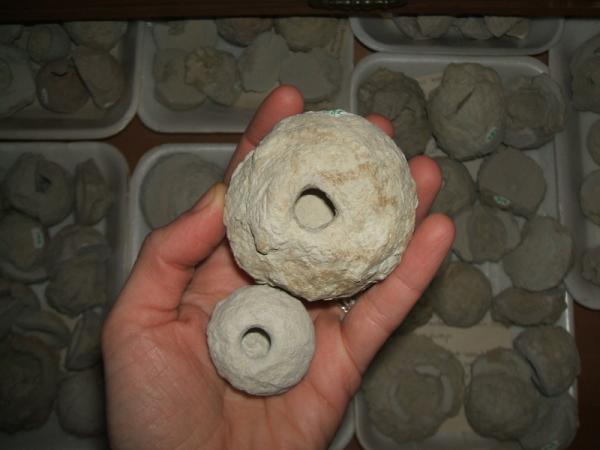Fossil animal feces reveal a secret ancient ecosystem
New research results on the 30 million-year-old fossil animal feces of a new species of ancient South American giant mammal were published in the Palaeontology, which reveals evidence of ecological interactions. complex.
Today's faeces are out of date. Once worshiped by ancient Egyptians, this species has now become a forgotten hero, a creature of obscene jokes. But in nature dung beetle is really a hero. We all know that without this little insect, the world will reach to the knees in animal dung, especially they are herbivores like cows, rhinos and elephants - big species, eat a lot, and release more feces. With the decomposition of these leftovers, dung beetles not only clean the surface of the Earth, but also improve and fertile soil, as well as significantly reduce the number of flies carrying pathogens.
If dung beetles are now praised for their Earth hygiene efforts, the extinct faeces of the ancient South American deserve to be awarded medals as well.
About 30 million years ago, the continent was home to a large extinct herbivore: the tatu with skeletons with a small four-wheeled vehicle of today, lazy land up to 6 meters tall and countless extinct mammals and ungulates of the size of an elephant. And of course, they defecate everywhere.
 Paleontologists in Argentina discovered that fossil fertilizers reveal a lot of information about an ancient ecosystem in the giant mammal world that lived 30 million years ago . (Photo: Victoria Sánchez)
Paleontologists in Argentina discovered that fossil fertilizers reveal a lot of information about an ancient ecosystem in the giant mammal world that lived 30 million years ago . (Photo: Victoria Sánchez)
But dung beetles always fulfill their mission. Although the beetles themselves are not fossilized, scientists still know they have been involved in cleaning up the Earth for a long time, because the results of the insect's labor are preserved under in the form of spherical fossil pellets, some of which have existed for more than 40 million years , and some are as big as tennis balls.
Now Argentine paleontologists who have studied these fossils have discovered that they have many things to tell us about an ancient mammalian ecosystem of ancient times. In the study published in the latest issue of Palaeontology, Victoria Sánchez and Dr. Jorge Genise reported traces created by other organisms inside fossilized pellets.
'Some traces are only the result of natural interactions,' explains Dr. Sánchez. 'For example, the bumblebees dig up empty cells near the place where these feces are buried, and in some cases they accidentally dig into the dung. But other traces noted the actions of the animals actively stealing food that dung beetles are saving. The shape and size of fossils and fossil bore holes in feces show that beetles, flies and worms are the culprits. Although no animal of any of these species is preserved in the same place where fossil fossils were discovered, fossil feces preserved to detail an ecosystem in the feces of giant living herbivores. 30 million years ago. '
Journal reference:
1. Sánchez et al.Cleptoparasitism and detritivory in dung beetle fossil brood balls from Patagonia, Argentina.Palaeontology, 2009;52 (4): 837 DOI: 10.1111 / j.1475-4983.2009.00877.x
- The history of the greatest 'dung' is sold for more than 200 million VND
- The most expensive feces in the world, 80kg worth $ 3 million
- Fecal fossil analysis of ancient people
- The use of animal manure makes you fall back from shock
- Discover the oldest fossil animal footprint ever
- Finding fossils of squirrel-like animal class in 'Ice Age'
- Fossils reveal the possibility of survival of new strains
- Discover the oldest scorpion fossil
- Fossils reveal the ancestors of today's lizards and snakes
- Unique animal fossil patterns in the world
- Freshwater monsters in Europe
- A good way to re-use the panda's feces
 Discovered an ancient centipede fossil 99 million years old
Discovered an ancient centipede fossil 99 million years old Discovered bat-like dinosaurs in China
Discovered bat-like dinosaurs in China Discovered a 200-year-old bronze cannon of the coast
Discovered a 200-year-old bronze cannon of the coast Discover 305 million-year-old spider fossils
Discover 305 million-year-old spider fossils